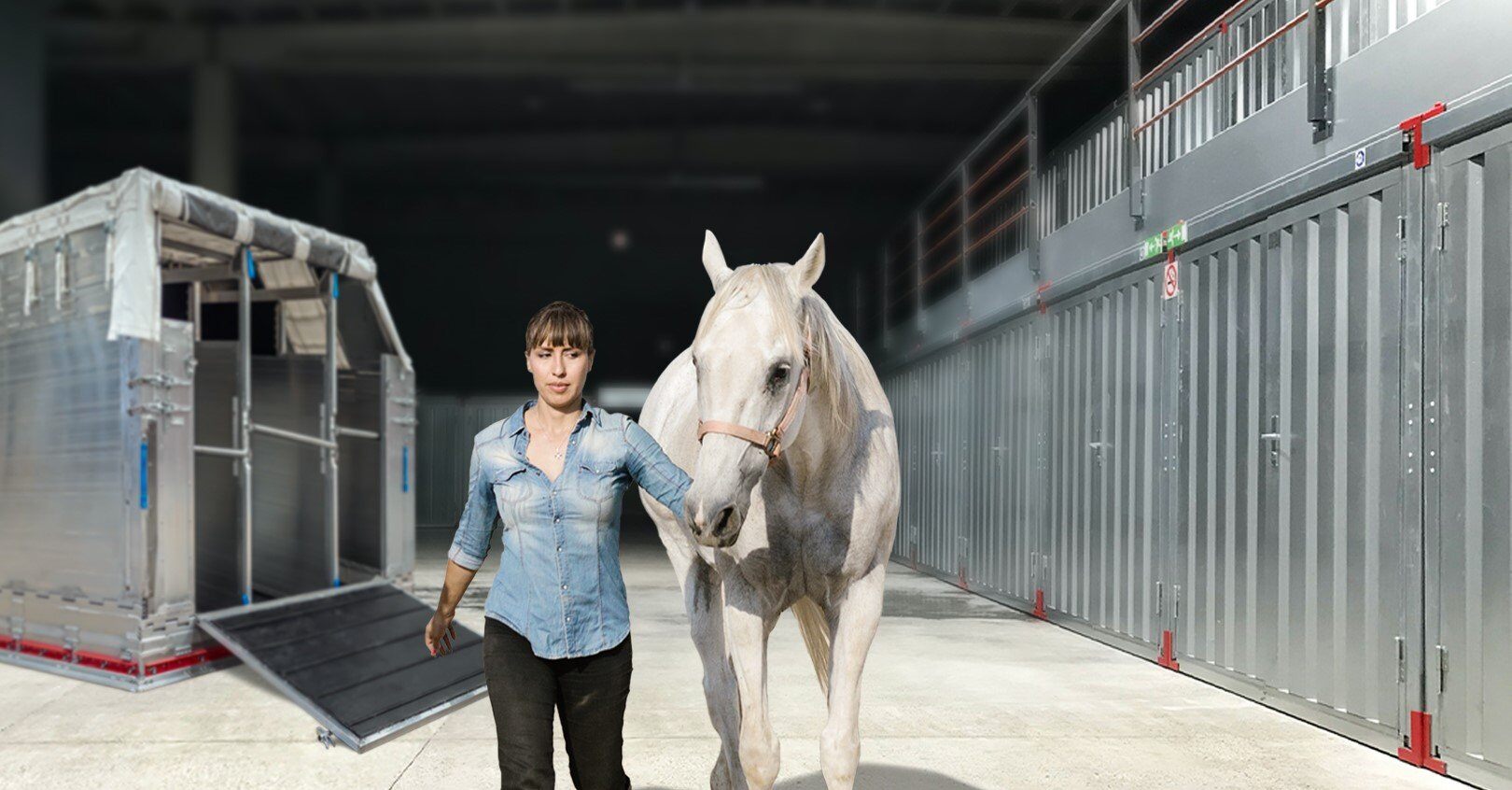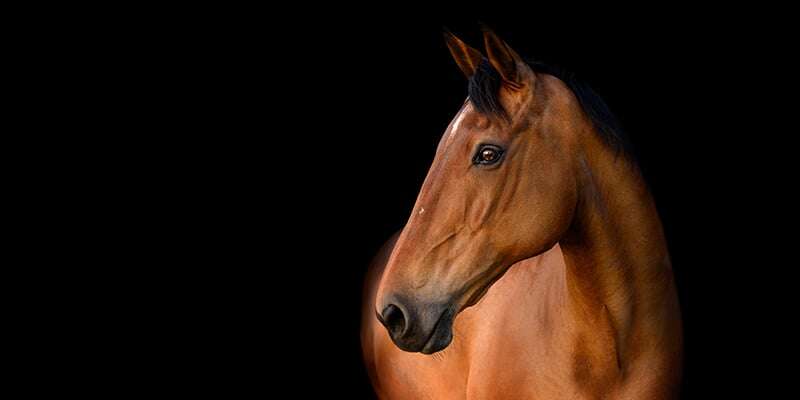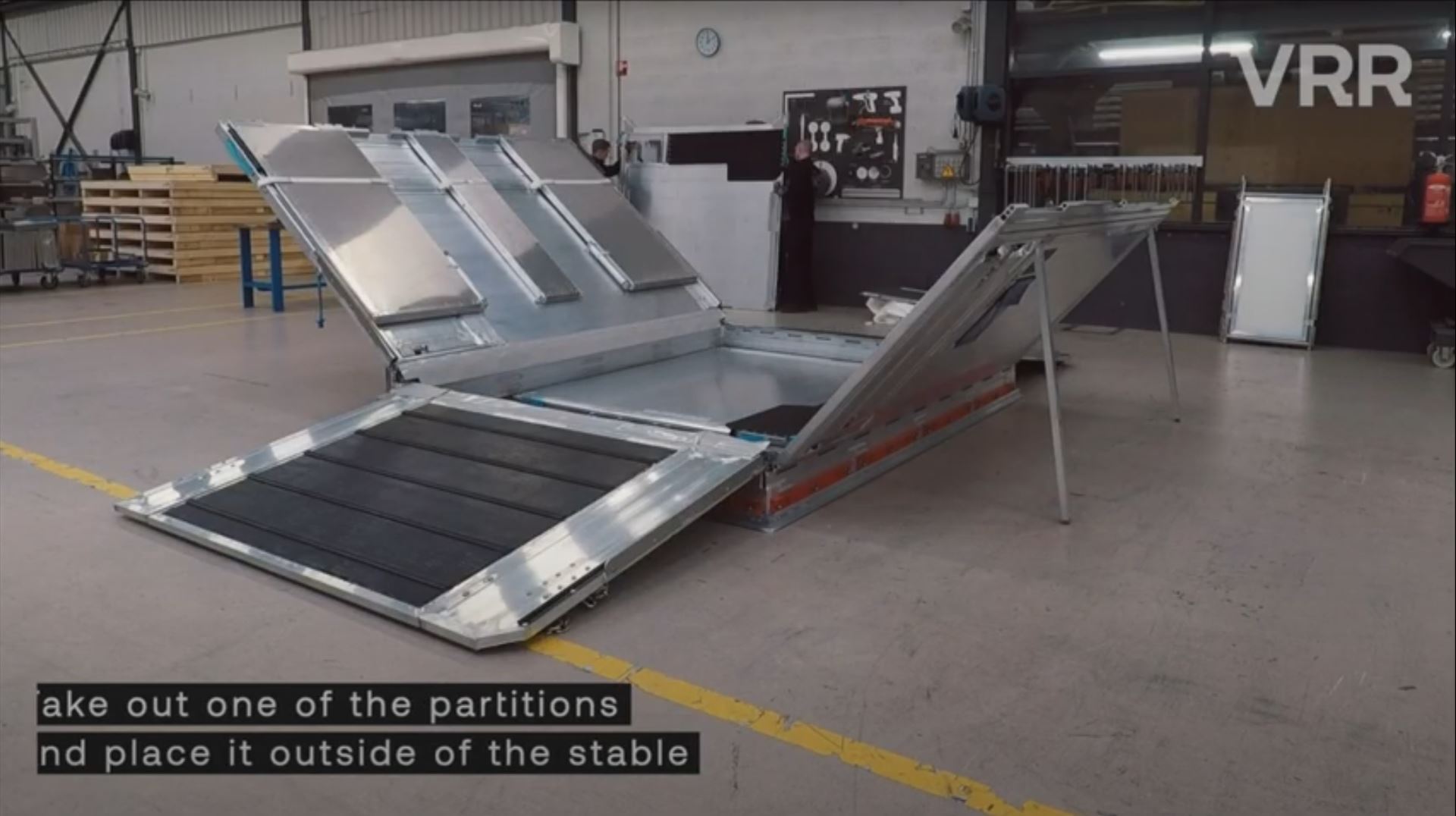If you’re involved with horses on airplanes, you know that it requires careful planning and exceptional care. Whatever the reason for flying—an international competition, a winter holiday in Florida or a permanent relocation—safety and comfort is always top of everyone’s agenda.
Thankfully, specialised horse air transport services enable thousands of horses to fly around the world every month without any problems. However, not all horses like to fly, and nervous horses can become stressed and risk hurting themselves and their handlers.
At VRR, we take a keen interest in what makes a horse feel safe and comfortable while flying. It’s why, when we design our closed horse stalls, we collaborate with those who really understand horses. One of those collaborators is Lodi Berk, Regional Cargo Sales Manager Live Animals for Qatar Airways.
Berk takes some time out of his busy day to share with us the primary factors to consider when shipping horses by air, and why he prefers certified stalls for the horses under his care.
Prefer to get a quick overview? Just download the infographic, giving you all the info you need.
How to make horses on airplanes more comfortable
1. Use expert handlers
Transporting horses by air is a complex, high-touch process that involves many people, from freight forwarders to airline staff. If these people are not qualified to handle live animals in transit, the horses are unlikely to arrive at their destination feeling rested. They may even come to harm.
 Loading a horse into an air stall is a particular stress point, so make sure handlers know how to do this safely. Each horse reacts differently to being loaded, depending on factors such as breed, age, flying experience and even the way they were raised.
Loading a horse into an air stall is a particular stress point, so make sure handlers know how to do this safely. Each horse reacts differently to being loaded, depending on factors such as breed, age, flying experience and even the way they were raised.
“That’s where a groom’s experience comes into play,” says Berk. “Some horses need a little push; others need a short rest. The spoilt ones like to play. Each one must be handled according to its own needs.”
Fortunately, there are several major airlines and freight forwarders that provide specialty cargo services for international horse transport these days. IATA also issues (CEIV) Live Animals certificates to organisations that meet industry standards, making it much easier to check a party’s ability to transport horses by air efficiently and humanely.
2. Establish an organised and timely boarding process
More and more airports, like Amsterdam (Schiphol) and New York (JFK), are providing dedicated facilities where carriers can safely load horses into the ULD or air stall, which is then brought planeside. Efficient documentation checks, specially designed quarantine and loading areas, and 24-hour veterinary services all help to ensure a smooth journey for the horse.
However, even if an airport does not have dedicated facilities, loading horses can still be done in a safe way, according to Berk. “Position the trailer thoughtfully, close to the stall, and lay anti-slip rubber matting in between the two units to prevent the horse from slipping. Creating the right set up prevents a lot of problems.”

3. Make it easier to load them into the ULD horse stall
Walking into an ULD horse stall can be challenging for some horses, especially if the ramp is narrow and the height is limited.
“It’s not good if a horse needs to bend his head down to walk into a stall, especially if the horse is nervous or claustrophobic,” explains Berk. “A taller stall with a wider ramp and a flat entry—like the HMJ—makes loading much safer and easier for both horse and groom.”
 The HMJ ULD that Berk refers to is four inches higher than most other closed stalls, which gives bigger horses like showjumpers more head room. That extra height, coupled with a ramp that is as wide as the stall itself and flooring that is flush with the entryway, encourages horses of all sizes to walk inside, even if they dislike confined spaces.
The HMJ ULD that Berk refers to is four inches higher than most other closed stalls, which gives bigger horses like showjumpers more head room. That extra height, coupled with a ramp that is as wide as the stall itself and flooring that is flush with the entryway, encourages horses of all sizes to walk inside, even if they dislike confined spaces.
4. Give them plenty of leg (and head) room
Yes, horses can suffer from claustrophobia, too. If the condition is already known about, arrangements can be made ahead of time to give the horse as much space as possible inside the stall. However, as Berk points out, not all owners are aware of the condition until the horse is loaded.
“If a horse is claustrophobic,” he says, “the best solution is to off-load one of the other horses and create more room. Of course, that means the off-loaded horse can’t fly unless you can find space in another stall.”
Moveable stall partitions are a handy feature that make such last-minute flight upgrades possible. Stalls set up for economy class travel (i.e. three horses) can be altered to business class (i.e. two horses) or even first class (i.e. one horse).
Claustrophobia or no, all horses need room to stretch their necks. This helps them to balance and to cough out unwanted hay and dust. Therefore, sufficient head room is extremely important.
“Always make sure the stall fits comfortably around the horse,” counsels Berk.
5. Reduce noise and vibration when being loaded into the plane
Horses can become unsettled while the stall is being positioned in the plane’s hold. They can feel the vibration of the powered cargo rollers as they are being shifted to their location, and inexperienced horses must learn to keep their balance and follow the motion of the container.
However, many horses dislike the moment the high loader lifts the stall into the hold because of the sideways movement. The anatomy of a horse means it is less stable moving sideways. “Claustrophobic horses in particular get distressed at this moment,” observes Berk. “Once the stall starts moving forward or backward, it is much easier for the horses to maintain their balance.”
 Several stall features exist to help calm a horse during the loading process. For example, noise-absorbing and vibration-damping flooring. Its special construction not only gives horses a much smoother, quieter ride but also protects their joints, making it a much more comfortable journey.
Several stall features exist to help calm a horse during the loading process. For example, noise-absorbing and vibration-damping flooring. Its special construction not only gives horses a much smoother, quieter ride but also protects their joints, making it a much more comfortable journey.
6. Provide a secure and stable environment
The more solid the stall, the more protected the horse, especially if panic sets in. The most solidly constructed stalls are undoubtedly certified containers. Designed to be directly restrained by the aircraft’s Cargo Loading System, they don’t require netting to secure them to the pallet. But, as Berk explains, their advantages extend beyond flight safety.
“Certified stalls are the best way to transport horses. They’re always closed, which makes a horse more comfortable. They are also stronger, so they’re much safer for the horse and the groom. Basically, they are designed to prevent injury and to keep a horse much more comfortable during the flight.”
 Unlike non-certified containers, which are built on a PMC pallet, certified containers stand on a heavy-duty pallet, which dampens vibration and stabilises the stall. In addition, the walls in the stall’s ‘kick area’ are made with non-resonant material.
Unlike non-certified containers, which are built on a PMC pallet, certified containers stand on a heavy-duty pallet, which dampens vibration and stabilises the stall. In addition, the walls in the stall’s ‘kick area’ are made with non-resonant material.
7. Keep them cool and hydrated
The air in any plane is very dry, and horses can generate a lot of heat, especially on long journeys. However, the risk of overheating and dehydration can be eliminated by providing the horses with enough water and ensuring the stall has adequate air flow.
“Easy groom access to a closed stall is important to monitor, feed and water horses throughout the flight,” says Berk. “A door on both sides of the stall is ideal as usually one side or the other is blocked by another container or loaded pallet.”
 He also recommends solid breast doors, which prevent the horse from blocking groom access, and adjustable ventilation. The front and rear of the stall should have ventilation covers that can be opened and closed. For additional air circulation, look for ventilation on the sides as well.
He also recommends solid breast doors, which prevent the horse from blocking groom access, and adjustable ventilation. The front and rear of the stall should have ventilation covers that can be opened and closed. For additional air circulation, look for ventilation on the sides as well.
8. Enjoy a clean, dry floor for the whole journey
Sooner or later, every passenger gets a ‘call of nature’ on a long-haul flight. A horse weighing 500 kilos can urinate many litres of fluid during that time. Of course, standing on a soiled, wet floor is not ideal, which is why sufficient absorption material such as wood shavings should always be used. It’s also essential that fluids and droppings do not leak from the stall in order to protect the aircraft from dirt and corrosion.
 Uncertified containers tend to cover their flooring with plastic and softboard, but Berk mentions that this is more of a workaround than a true leakproof solution. It’s another reason he’s so keen on using certified containers in his fleet. “They have watertight trays that are fully tested. In addition, the floor is slip-proof and the rear door is splash-proof.”
Uncertified containers tend to cover their flooring with plastic and softboard, but Berk mentions that this is more of a workaround than a true leakproof solution. It’s another reason he’s so keen on using certified containers in his fleet. “They have watertight trays that are fully tested. In addition, the floor is slip-proof and the rear door is splash-proof.”
9. Arrange suitable stall neighbours
No-one travelling on a plane wants to be bothered by fellow passengers, and horses are no exception. Unruliness and conflict can occur if neighbouring horses don’t get on with each other, which is why careful thought must be given to their ‘seating arrangements’ prior to flying.
“If possible, don’t put a stallion next to a mare,” says Berk. “Put him next to a gelding or another stallion. If you have a nervous horse, try pairing him up with a calm, experienced flyer. And always try to keep travelling buddies together.”
As an extra precaution, use sniffer boards to prevent horses from nuzzling and biting their neighbours.
Conclusion
Flying horses around the world has become as routine as flying humans. Even so, there are ways to make the flight feel less like economy and more like first class. The key is meticulous preparation and using the right horse stall. If you can meet a horse’s individual transportation needs, you will have a happy and relaxed animal at the end of the flight.
Like to have a reminder or short overview of these valueble tips? Just download the free infograhic.
About Willem Berk
Willem (Lodi) Berk, who has been riding horses since the age of 13, owns several horses. In 2006, he joined the air freight industry as a flying groom. Now he works for Qatar Airways Cargo as Regional Sales Manager Live Animals. He oversees the transportation of all kinds of animals, from horses, cattle and dogs to falcons, elephants and dolphins.
Berk, who is on the board of the Animal Transportation Association (ATA) and the IATA Live Animals and Perishable
Board (LAPB), was closely involved in the design of the HMJ. He believes it is one of the best certified horse stalls on the market.

.png)





